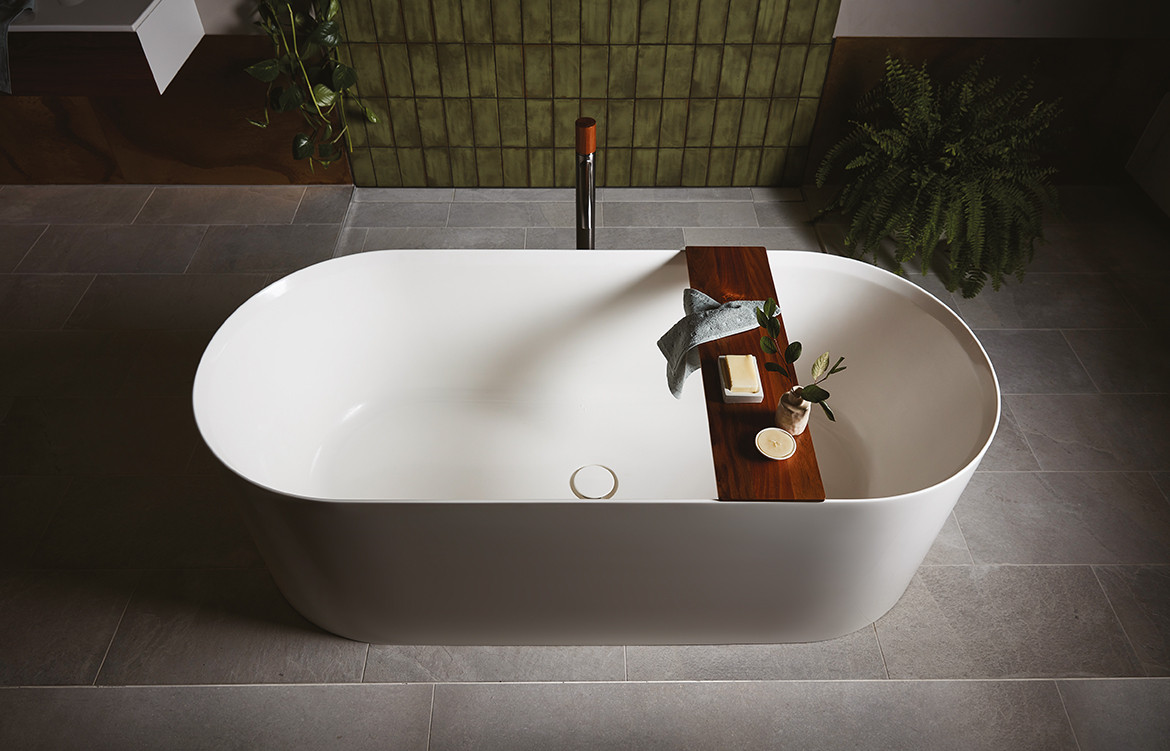
The humble bathroom has transformed from outhouse status to become a valued extension of our living spaces – a safe haven of luxury and refined self-expression.
Throughout history, bathrooms have been first and foremost associated with hygiene; purely practical, far from glamorous, and often an after-thought in residential design. Most households – even those more affluent – throughout much of the twentieth century, bathrooms remained somewhat clinical by design – sparse, white spaces. In the 1960s however, something changed. Rising prosperity in developed countries and a pop culture increasingly focussed on pleasure saw bathrooms become an opportunity to showcase luxury in the home.
Story continues below advertisement
Today, contemporary residential bathrooms have come to resemble those of opulent hotels. Once a space disconnected from the rest of the house, the bathroom has evolved into something more like a private day spa; a place not just about personal hygiene, but about ritual and rejuvenation. The humble bathroom has transformed from outhouse status to become a valued extension of our living spaces – a safe haven of luxury and refined self-expression.
In tending to this higher purpose, bathrooms have gained priority in the holistic residential design conversation – not only in terms of aesthetic, but in terms of how they fit into the flow of daily life, and (by extension) the spatial flow of the house. Ospace Architects’ House with Terrazzo is an example of a residence in which a beautiful sense of consistency is achieved through materiality and an open approach to space.
Story continues below advertisement
Flowing openly from the bedroom, House with Terrazzo’s main bathroom is finished almost entirely with terrazzo. A free-standing bath with an overhead rain shower is positioned centre stage, enclosed by a curved capsule of transparent glass. A number of partitions were removed from the apartment to enhance the flow of natural light and create a sense of openness. The result is a private relaxation zone that is separate from, yet (thanks to material consistency and spatial character) feels one with the living, dining and working spaces.
While Opace Architect’s House with Terrazzo is an example of a bathroom designed to look, feel, and flow as an extension of the rest of the house, its minimalist aesthetic doesn’t come across as an exercise in self-expression. In contrast, the bathrooms of Woollahra Residence by Decus Interiors use texture, pattern, and colour as a means of individual expression and creativity. Each of the home’s four bathrooms has been adorned with its own unique design personality.
Story continues below advertisement
Above and beyond simply creating beautiful spaces, Woollahra Residence’s bathrooms have been designed to reflect the personalities of its residents – a professional couple who are living, breathing proof that opposites attract. Each space is rich in tone and tactility, yet different from the last, designed to both complement and contrast the others. The result is a home that reflects and celebrates the playful, lavish and dramatic.
As bathrooms are increasingly seen as spaces of sanctuary rather than simple sanitation, the notion of biophilia is permeating their design. Founded on the belief that connections to nature can enhance human health and well-being, biophilic design seeks to guide the behaviours associated with finding, using and enjoying natural resources. By this token, our ordinary and functional daily rituals can be seamlessly woven with biophilic resources to create luxurious nature inspired bathrooms, with relaxation and rejuvenation at their core.
Forever at the forefront of bathroom design innovation, iconic Australian brand Caroma has embraced the concept of biophilia in the bathroom whole-heartedly. Carefully crafted to bring the experience of Australian nature into the home Caroma’s latest collection, Elvire, is the pinnacle of contemporary, sustainable bathroom design. Enamelled steel basins and sophisticated gunmetal finishes combine with accents of Tasmanian timber exude natural beauty while inviting touch and interaction.
A true testament to Caroma’s human-centric approach to design, the Elvire collection acknowledges the intrinsic human need to experience and connect with nature, and tactfully addresses that need with masterful attention to materiality. In combining an appreciation for sustainability and artisanship with their technologically advanced bathroom solutions, Elvire by Caroma reflects contemporary values, pays tribute to the age-old rituals of traditional bathhouses, and upholds a mindfulness for the future.
Caroma
caroma.com.au